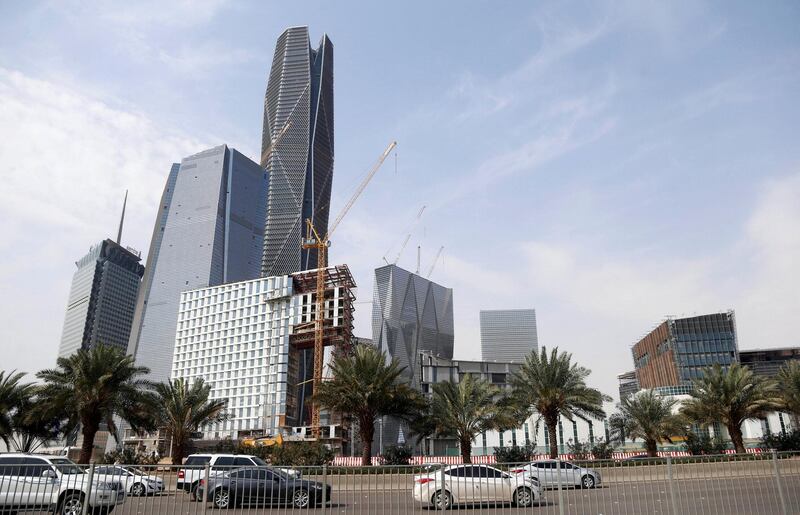Saudi Arabia could raise as much as $35 billion over the next five years by privatising some of the state-controlled assets, as part of the country's national transformation plan and Vision 2030 that seeks to reduce its reliance on oil, according to Japan’s MUFG Bank.
“What stands out is Saudi Arabia’s privatisation programme …. because not only are you raising non-oil revenue but you are also enticing the private sector to work," Ehsan Khoman, the head of research for the Middle East and North Africa at MUFG, the world’s fifth-biggest bank by assets, said at a media briefing on Wednesday.
“For us it’s not about just getting out of the cyclical nature oil prices, you are structurally changing your economy and raising your non-oil revenues, which certainly is the way to go.”
Saudi Arabia, Opec’s biggest oil exporter, is trying to radically diversify its economy away from oil and cut is dependence on the sale of hydrocarbons for revenues, which account for the majority of its current income. The oil price slump from the mid-2014 peak of $115 per barrel to less than $30 per barrel in the first quarter of 2016 led to a reduction in government spending and slashing of subsidies. It also accelerated the efforts to sell stakes in some of the state assets, including oil and gas major Saudi Aramco, which is slated for this year.
The kingdom has already announced 16 sectors of its economy for privatisation such as healthcare, education and transportation including some of the prime aviation assets, Mr Khoman noted.
_______________
Read More:
[ Saudi fiscal reforms likely to bring oil break-even price below $55 per barrel by 2021 ]
[ Saudi Arabia consumer spending to pick up as economy improves ]
Saudi Crown Prince presents his transformative Vision 2030 to UK
Saudi Arabia central bank ends most repos as liquidity improves
_______________
Brent, the benchmark of more than half of the world’s oil, has risen from lows to near $70 per barrel in recent weeks, but MUFG estimates that the kingdom would need at least $51bn this year to plug its budget deficit. Riyadh has already tapped the bond market with a $11bn multi-tranche issue. Other options could include issuance of domestic debt, funds from privatisation efforts and a draw down on foreign reserves, Mr Khoman said.
Saudi Arabia is likely to lower its budget break-even oil price to below $55 per barrel by 2021. After slashing nominal government expenditures by a fifth, cutting subsidies, introducing new taxes and raising non-oil revenues, the kingdom lowered its breakeven oil price to $74.4 per barrel in 2018, down 29 per cent from $105.7 in 2014, MUFG said in a report earlier this month. Breakeven oil prices are likely to remain at $69.3 per barrel in 2019 as the kingdom shifts its strategy of deficit reduction and austerity to focusing on economic stimulus, it noted.
“We are particularly impressed with Saudi Arabia. This year’s budget is less on the austerity and more on stimulus [side]. The consolidation programme is designed as such so there is minimum impact on growth,” Mr Khoman said. “Their [fiscal] profile and what they have articulated is certainly very pragmatic in our view.”







